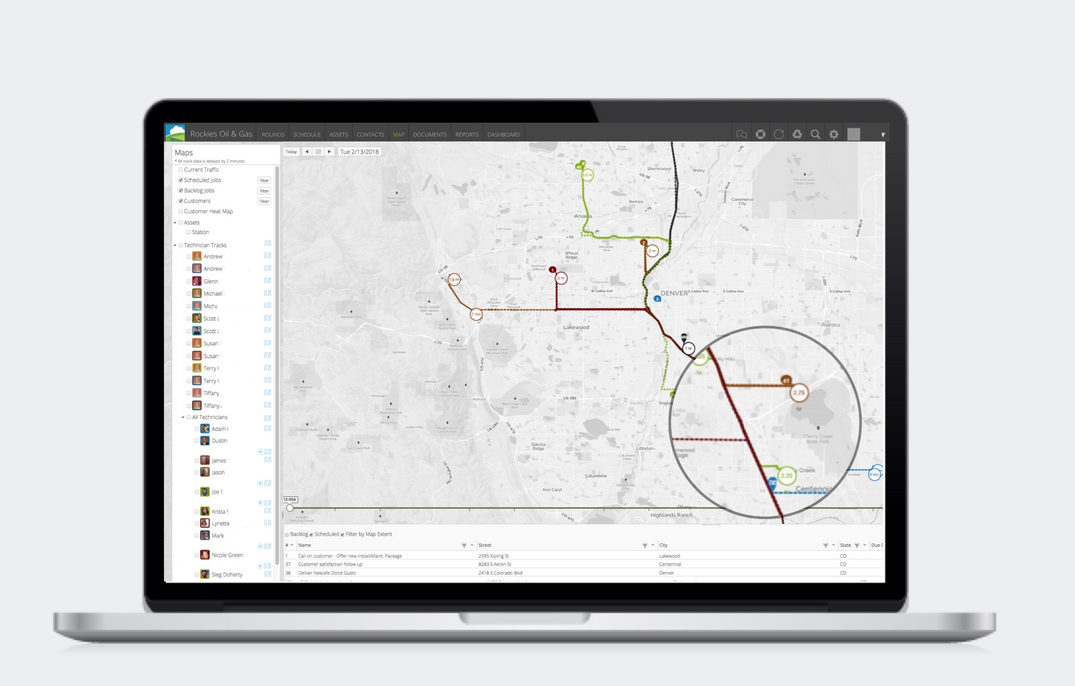
Why Route Optimization Matters
What if we told you that route optimization could give you an entire day back? Imagine your customers and employees becoming more satisfied and your company’s revenue increasing simultaneously. Seems like a win-win for everyone, doesn’t it?
Route optimization isn't just a buzzword; it’s a strategic approach to improving efficiency and productivity in your business operations. By utilizing advanced algorithms and real-time data, route optimization helps determine the most efficient routes for field workers, delivery drivers, and service technicians. This saves time, reduces operational costs, and enhances customer satisfaction.
Route optimization is not merely about finding the quickest path from point A to point B; it has profound financial implications that can transform the economics of a business. Here are nine key benefits why route optimization can have a significant financial impact on your profits:
1 Fuel Cost Reduction
According to research, route optimization can significantly lower fuel costs by 20%. This substantial reduction in fuel expenses directly impacts a company's bottom line, allowing for the reallocation of resources to other critical areas. With fluctuating fuel prices, maintaining predictable and lower fuel costs can provide a competitive edge and stabilize operating budgets.
2 Reduced Vehicle Wear and Tear
Fewer miles traveled mean less wear and tear on vehicles. Route optimization ensures that vehicles are used more efficiently, reducing the frequency of maintenance and repairs. This lowers maintenance costs and extends the fleet's lifespan, leading to long-term savings. Businesses can then allocate the saved resources towards expanding their fleet or investing in other areas of the operation.
3 Lower Labor Costs
Optimizing routes can reduce the required hours for delivery and service routes. This means fewer overtime hours and a more balanced workload for employees, which translates to lower labor costs. Additionally, with more efficient routes, employees can complete their tasks more quickly, allowing for potential reductions in staffing needs or enabling the existing workforce to handle more tasks within the same time frame.
4 Improved Asset Utilization
Route optimization helps in better asset utilization. This means delivery trucks, service vehicles, and personnel are used more effectively. Optimizing routes can reduce idle times and ensure that assets are being used to their full potential, thus improving the return on investment (ROI) for these assets. For example, a delivery truck that completes its route quicker can be redeployed for another task within the same day, maximizing its utility.
5 Enhanced Productivity
Employees can focus more on productive activities by minimizing unnecessary travel and streamlining routes rather than spending excessive time on the road. This increases productivity as employees can handle more jobs in less time, increasing overall operational efficiency. Higher productivity often correlates with increased revenue, as more services or deliveries can be completed within the same timeframe.
6 Reduced Environmental Impact
Efficient routing not only saves money but also reduces a business's environmental footprint. By lowering fuel consumption and emissions, companies can demonstrate their commitment to sustainability, which can be important for attracting environmentally conscious customers and partners. Moreover, adopting green practices can open up opportunities for government incentives and grants to promote sustainability in business operations.
7 Minimized Risk of Accidents and Violations
Route optimization can help in reducing the risk of accidents and traffic violations. By planning routes that avoid congested areas and hazardous conditions, companies can ensure safer travel for their employees. Fewer accidents mean lower costs related to vehicle repairs, legal fees, and insurance premiums. Additionally, compliance with traffic regulations reduces the likelihood of fines and penalties.
8 Increased Customer Satisfaction
Efficient routing ensures timely deliveries and services, which significantly enhances customer experience. When customers receive their goods and services on time, their trust and loyalty towards your company increase, resulting in repeat business and positive word-of-mouth. Satisfied customers are more likely to become repeat clients, reducing customer acquisition costs and boosting long-term revenue.
9 Handling Unexpected Disturbances
A study discovered that the more unexpected disturbances on a route (such as traffic congestion, a dinner break, or a last-minute pickup job), the more crucial it is to use route optimization. This is particularly important if your objective is efficient fuel utilization. Route optimization tools can dynamically adjust routes in response to real-time disruptions, ensuring that your operations remain efficient and cost-effective.
Field Squared's AI-driven Advanced Scheduling Module enhances the benefits of route optimization outlined in the blog. By leveraging sophisticated algorithms and real-time data, this module ensures that field workers, delivery drivers, and service technicians follow the most efficient routes. This leads to significant savings in fuel costs, reduces vehicle wear and tear, lowers labor costs, and improves asset utilization. Furthermore, the module boosts productivity, minimizes environmental impact, reduces the risk of accidents, and enhances customer satisfaction. With the ability to dynamically adjust to unexpected disturbances, Field Squared's Advanced Scheduling Module is a powerful tool for optimizing routes and transforming business operations.


